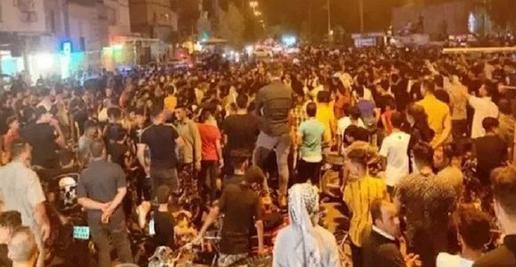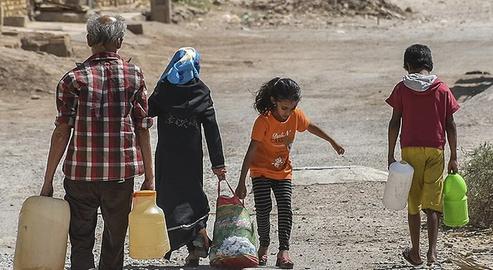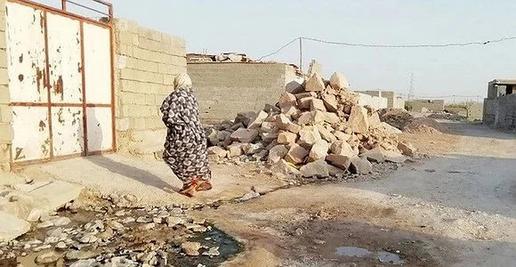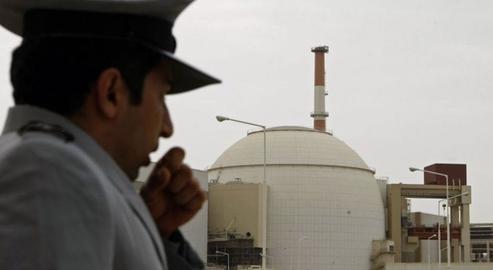In mid-July 2021, mass protests over the water crisis in Khuzestan broke out in cities across the province and spread to other parts of Iran. Over the course of about 20 days, at least a dozen people were killed by direct fire from security forces while hundreds more were injured and jailed. The droughts, and ensuing unrest, were the result of decades of mismanagement and neglect of Khuzestan by Islamic Republic officials.
From the beginning, the Iranian regime sought to twist the narrative by claiming foreign actors were encouraging the protests, and those injured and killed were criminals. In its latest issue, the Iranian quarterly Crisis Management and Emergency Situations, which is affiliated with the Islamic Revolutionary Guard Corps, tried to present the widespread discontent in Khuzestan from a different, even more bizarre set of angles.
The journal article, entitled Possibility of Social Crises Caused by Natural Disasters in Khuzestan Province, noted that dissatisfaction with the state in Khuzestan was at a “very high” level. But instead of addressing the deficiencies of the Islamic Republic, it considered the possible link between social unrest and the environment, ethnic differences and “prostitution”.
Earthquakes Blamed for Social Unrest
"Today,” the authors asserted, “there are more than 40 known [types of] natural hazards in the world, of which 31 are present in Iran, and 21 in Khuzestan." Just between 1991 and 1996, the study said, Khuzestan had experienced at least 80 major floods, eight periods of drought, 501 storms, 200 major outbreaks of pests and disease and 100 earthquakes, as well as hundreds of separate incidences of forest fires, subsidence, landslides and coastal erosion.
The parts of the province worst-hit by floods in the last 45 years, the study said, were Ahvaz, the Azadegan Plain, Izeh and Masjed Soleyman. It also pointed to a number of factors making Khuzestan especially vulnerable to natural disasters, including the sheer number of rivers and waterways, the amount of cultivated land, altitudes in some places of more than 3,000 meters above sea level, and proximity to desert areas.
Local interviewees complained to the study’s authors about weak infrastructure all over the province, which was never properly restored after the Iran-Iraq war. One said: "If an earthquake with relatively high strength occurs in this province, due to the old buildings and weak fortifications, there will definitely be many casualties." The study also said “illegal construction along rivers” was exacerbating “crisis” in the province.
Study Claims “Enemies of the System” Targeting Arabs
The IRGC-backed journal then asserted that alongside the volatile environment, “inter-ethnic disputes and conflicts” were breaking out that posed a major – if not the most major – threat to security in Khuzestan. “The most important social crisis in Khuzestan province is the issue of Arab people and Bakhtiari nationalism,” the authors wrote, “and in second place, with a slight difference from ethnic conflicts, are severe class differences and poverty.
“The Arab ethnic group has a larger population in Khuzestan province than others, and the internal conflicts of the Arab tribes on the one hand, and their old differences with the Persian people on the other, have caused this ethnic group to attract the most attention from enemies of the system.”
It went on: “The old land disputes continue, and there are dangerous divides in Khuzestan province, as if the Arabs and Bakhtiaris each live in a separate country.” Part of this, it said, was driven by socio-economic differences; ethnic Persian residents were said to be the wealthiest on average, followed by “the Lor and Bakhtiari ethnic groups”, while Arabs from the Qashqai tribe experienced the highest recorded levels of poverty.
On top of this, the article claimed, a major source of resentment for Khuzestan’s Arab residents was related to state actors’ ethnicities. Based on interviews conducted for the study, it concluded: “One of the things the Arab-speaking people of Khuzestan province complain about is why the security and law enforcement officials of the province should always be non-Arab. They [Arabs] interpret this as a sign of government distrust in them."
“Western Clothes” as Sign of Crisis
The new study acknowledged that public dissatisfaction with the system in Khuzestan seemed to be worse than in some other parts of Iran, noting that during the November 2019 protests particularly large crowds amassed in this province. Despite contributing billions to Iran’s public coffers through its vast natural resources and oil and gas reserves, Khuzestan remains one of the most deprived provinces in Iran due to decades of neglect by central government. Senior managers and the specialized workforce in Khuzestan’s petrochemical facilities are also mostly from outside the province, and enjoy conspicuously better salaries and benefits, with much higher purchasing power than locals. This too has stoked discontent in Khuzestan.
The Crisis Management study, however, focused on some curious aspects of this very real issue. "Another very dangerous and significant social crisis in various parts of Khuzestan,” it stated, “is poverty and prostitution... the Western clothes that are seen in some neighborhoods of Tehran are found in some parts of Khuzestan province."
A cleric with cultural functions in Khuzestan was interviewed as part of the study. He told the authors: “Prostitution and illegal relationships in Khuzestan are rampant, mainly due to poverty and helplessness. Addiction and delinquency among young people, and their lack of employment, is significant, and indicates a very dangerous socio-cultural crisis."
In sum, the study said, earthquakes and floods, followed by poverty and ethnic differences, were the driving forces behind unrest in Khuzestan.
Throughout the article, the authors touched on many of the genuine issues behind the recent protests: mismanagement, deprivation and insecurity. But these remarks were tempered by the same discriminatory attitude that has informed the Islamic Republic’s policies in Khuzestan for 40 years, and which put the people in this situation in the first place.
Related coverage:
One Hour of Running Water a Day for Residents of Oil-Rich Khuzestan
Three Decades After the Iran-Iraq War, Khuzestan's Reconstruction is Still Unfinished
Measuring Discontent in Iran's Khuzestan Province
Furious Crowds Protest Water Crisis in Khuzestan
Decades of Bribery and Mismanagement Lead to Khuzestan’s Protests
visit the accountability section
In this section of Iran Wire, you can contact the officials and launch your campaign for various problems



























comments